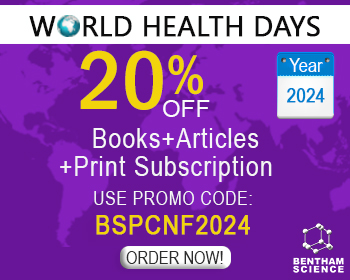Abstract
Background: Hepatocellular carcinoma (HCC) seriously affects human health, especially, it easily develops multi-drug resistance (MDR) which results in treatment failure. There is an urgent need to develop highly effective and low-toxicity therapeutic agents to treat HCC and to overcome its MDR. Targeted drug delivery systems (DDS) for cancer therapy, including nanoparticles, lipids, micelles and liposomes, have been studied for decades. Recently, more attention has been paid to multifunctional DDS containing various ligands such as polymer moieties, targeting moieties, and acid-labile linkages. The polymer moieties such as poly(ethylene glycol) (PEG), chitosan (CTS), hyaluronic acid, pullulan, poly(ethylene oxide) (PEO), poly(propylene oxide) (PPO) protect DDS from degradation. Asialoglycoprotein receptor (ASGPR) and glycyrrhetinic acid receptor (GAR) are most often used as the targeting moieties, which are overexpressed on hepatocytes. Acid-labile linkage, catering for the pH difference between tumor cells and normal tissue, has been utilized to release drugs at tumor tissue.
Objectives: This review provides a summary of the recent progress in ASGPR and GAR-mediated and/or pH-responsive HCC-targeted drug delivery.
Conclusion: The multifunctional DDS may prolong systemic circulation, continuously release drugs, increase the accumulation of drugs at the targeted site, enhance the anticancer effect, and reduce side effects both in vitro and in vivo. But it is rarely used to investigate MDR of HCC; therefore, it needs to be further studied before going into clinical trials.
Keywords: Hepatocellular carcinoma, Drug delivery systems, Asialoglycoprotein receptor, Glycyrrhetinic acid receptor, pH-responsive, Chemotherapy drug.
[http://dx.doi.org/10.1002/ijc.29210] [PMID: 25220842]
[http://dx.doi.org/10.1002/ijc.30517] [PMID: 27861850]
[http://dx.doi.org/10.1021/nn2013707] [PMID: 21627074]
[http://dx.doi.org/10.1016/j.biomaterials.2014.11.022] [PMID: 25433607]
[http://dx.doi.org/10.1016/j.addr.2013.09.019] [PMID: 24120656]
[http://dx.doi.org/10.1002/smll.200900621] [PMID: 19780069]
[http://dx.doi.org/10.5732/cjc.011.10326] [PMID: 22237039]
[http://dx.doi.org/10.1016/j.molonc.2015.06.005] [PMID: 26160430]
[http://dx.doi.org/10.4254/wjh.v7.i7.980] [PMID: 25954480]
[http://dx.doi.org/10.4254/wjh.v7.i10.1412] [PMID: 26052386]
[http://dx.doi.org/10.1039/c6cc10330h] [PMID: 28119967]
[http://dx.doi.org/10.1002/anie.201507800] [PMID: 26447888]
[http://dx.doi.org/10.1038/nrc1071] [PMID: 12724736]
[http://dx.doi.org/10.1021/acs.bioconjchem.6b00651] [PMID: 27966887]
[http://dx.doi.org/10.1021/acs.molpharmaceut.5b00677] [PMID: 26808002]
[http://dx.doi.org/10.1002/med.21280] [PMID: 23494977]
[http://dx.doi.org/10.1111/jphp.13158] [PMID: 31456253]
[http://dx.doi.org/10.2174/138945011795906615] [PMID: 21443477]
[http://dx.doi.org/10.1016/j.biotechadv.2013.11.009] [PMID: 24309541]
[http://dx.doi.org/10.1039/C6SC03210A] [PMID: 28451309]
[http://dx.doi.org/10.1021/ja806519m] [PMID: 18839952]
[http://dx.doi.org/10.1021/ja907838s] [PMID: 20085351]
[http://dx.doi.org/10.1002/anie.201108466] [PMID: 22473661]
[http://dx.doi.org/10.1016/j.jconrel.2011.01.030] [PMID: 21295087]
[http://dx.doi.org/10.1039/C3PY01192E]
[http://dx.doi.org/10.1021/ja207463b] [PMID: 21910482]
[http://dx.doi.org/10.1021/ja902062j] [PMID: 19772360]
[http://dx.doi.org/10.1016/j.biomaterials.2014.03.065] [PMID: 24731706]
[http://dx.doi.org/10.1002/anie.201306724] [PMID: 24255024]
[http://dx.doi.org/10.1016/j.jconrel.2015.02.022] [PMID: 25701309]
[http://dx.doi.org/10.1016/j.addr.2011.09.006] [PMID: 21996056]
[http://dx.doi.org/10.1039/C4CC03984J] [PMID: 25058003]
[http://dx.doi.org/10.1002/smll.201702037] [PMID: 29251419]
[http://dx.doi.org/10.1016/S0092-8674(00)81683-9] [PMID: 10647931]
[http://dx.doi.org/10.1016/S0002-9440(10)64739-6] [PMID: 10666364]
[http://dx.doi.org/10.1016/j.jhep.2004.09.006] [PMID: 15519663]
[http://dx.doi.org/10.1016/S0002-9440(10)65006-7] [PMID: 10751361]
[http://dx.doi.org/10.1016/0163-7258(90)90091-F] [PMID: 2203072]
[PMID: 9044858]
[http://dx.doi.org/10.1038/mt.2015.147] [PMID: 26278330]
[http://dx.doi.org/10.1158/0008-5472.CAN-04-0074] [PMID: 15172975]
[http://dx.doi.org/10.1142/9781860948039_0003]
[PMID: 2946403]
[http://dx.doi.org/10.1016/j.drudis.2006.07.005] [PMID: 16935749]
[http://dx.doi.org/10.1080/10611860701539584] [PMID: 17671892]
[http://dx.doi.org/10.1016/j.jconrel.2016.11.015] [PMID: 27871992]
[http://dx.doi.org/10.1016/j.jconrel.2014.03.057] [PMID: 24794900]
[http://dx.doi.org/10.2174/156652409788167113] [PMID: 19519400]
[http://dx.doi.org/10.1016/j.bbcan.2016.06.004] [PMID: 27343712]
[http://dx.doi.org/10.1093/jnci/djm135] [PMID: 17895480]
[http://dx.doi.org/10.1016/j.addr.2013.07.012] [PMID: 23880506]
[http://dx.doi.org/10.1083/jcb.98.5.1757] [PMID: 6144684]
[PMID: 2684393]
[http://dx.doi.org/10.1016/j.nano.2015.12.381] [PMID: 26772424]
[http://dx.doi.org/10.1016/j.radonc.2009.06.025] [PMID: 19604589]
[http://dx.doi.org/10.1016/j.febslet.2007.06.018] [PMID: 17586500]
[http://dx.doi.org/10.3389/fphys.2013.00400] [PMID: 24409151]
[http://dx.doi.org/10.1016/j.canlet.2010.03.001] [PMID: 20338684]
[http://dx.doi.org/10.1158/0008-5472.CAN-05-2806] [PMID: 16424020]
[http://dx.doi.org/10.1016/j.mattod.2015.11.025]
[http://dx.doi.org/10.2174/1389450115666140309232100] [PMID: 24606040]
[http://dx.doi.org/10.2147/ijn.s33965] [PMID: 23093902]
[http://dx.doi.org/10.1053/jhep.2002.36372] [PMID: 12395320]
[http://dx.doi.org/10.1111/j.1478-3231.2006.01316.x] [PMID: 16953838]
[PMID: 22292640]
[PMID: 5635941]
[http://dx.doi.org/10.1021/bi00495a001] [PMID: 2125488]
[http://dx.doi.org/10.1152/physrev.1995.75.3.591] [PMID: 7624395]
[http://dx.doi.org/10.3109/10799899609039951] [PMID: 8968961]
[http://dx.doi.org/10.2174/156720108785915069] [PMID: 18855599]
[http://dx.doi.org/10.1016/S0378-5173(03)00082-6] [PMID: 12672602]
[http://dx.doi.org/10.1186/s12951-015-0068-6] [PMID: 25643602]
[http://dx.doi.org/10.1016/0005-2736(91)90253-5] [PMID: 2065071]
[http://dx.doi.org/10.1016/S1386-6346(03)00154-2] [PMID: 12963436]
[http://dx.doi.org/10.1111/j.1440-1746.1992.tb00927.x] [PMID: 1543863]
[PMID: 9807199]
[http://dx.doi.org/10.1016/j.biopha.2017.08.123] [PMID: 28886526]
[http://dx.doi.org/10.1016/S0928-0987(00)00166-4] [PMID: 11033430]
[http://dx.doi.org/10.1016/j.ces.2005.06.019]
[http://dx.doi.org/10.1016/j.copbio.2011.04.020] [PMID: 21592772]
[http://dx.doi.org/10.1007/s40005-017-0329-5]
[http://dx.doi.org/10.1002/mabi.201000427] [PMID: 21188686]
[http://dx.doi.org/10.1016/j.colsurfb.2016.09.020] [PMID: 27665379]
[http://dx.doi.org/10.1002/jbm.b.32767] [PMID: 22865703]
[http://dx.doi.org/10.1002/app.42625]
[http://dx.doi.org/10.1016/j.carbpol.2013.01.014] [PMID: 23544558]
[http://dx.doi.org/10.4161/cbt.22001] [PMID: 22954702]
[http://dx.doi.org/10.1016/j.addr.2015.11.011] [PMID: 26592477]
[http://dx.doi.org/10.2174/1389450116666150531155200] [PMID: 26028046]
[http://dx.doi.org/10.1016/S0168-3659(00)00368-0] [PMID: 11182206]
[http://dx.doi.org/10.1002/jbm.a.34680] [PMID: 23613258]
[http://dx.doi.org/10.1016/j.biomaterials.2013.05.081] [PMID: 23791500]
[http://dx.doi.org/10.1038/nrd1033] [PMID: 12612647]
[http://dx.doi.org/10.1038/nrd1632] [PMID: 15688077]
[http://dx.doi.org/10.1038/nrd2614] [PMID: 18758474]
[http://dx.doi.org/10.1016/S0168-3659(01)00309-1] [PMID: 11489482]
[http://dx.doi.org/10.1208/s12249-010-9422-z] [PMID: 20414758]
[http://dx.doi.org/10.1016/S0278-6915(97)00001-X] [PMID: 9207894]
[http://dx.doi.org/10.1016/S0168-3659(98)00017-0] [PMID: 9766251]
[http://dx.doi.org/10.1023/A:1015370532543] [PMID: 12069173]
[http://dx.doi.org/10.1002/anie.201002969] [PMID: 21275011]
[http://dx.doi.org/10.1021/bm025740+] [PMID: 12741758]
[http://dx.doi.org/10.1021/bm8012742] [PMID: 19281149]
[http://dx.doi.org/10.1016/S0378-5173(00)00405-1] [PMID: 10867265]
[http://dx.doi.org/10.1016/j.biomaterials.2009.08.029] [PMID: 19726082]
[http://dx.doi.org/10.1016/j.biomaterials.2011.03.069] [PMID: 21561660]
[http://dx.doi.org/10.1002/adhm.201500622] [PMID: 26449186]
[http://dx.doi.org/10.1016/j.jconrel.2012.12.006] [PMID: 23247039]
[http://dx.doi.org/10.1039/C5TB00600G] [PMID: 32262737]
[http://dx.doi.org/10.3390/molecules190913305] [PMID: 25170951]
[http://dx.doi.org/10.1016/j.ijpharm.2013.04.025] [PMID: 23618965]
[http://dx.doi.org/10.1021/bc060401p] [PMID: 17488066]
[http://dx.doi.org/10.1002/asia.201600452] [PMID: 27410679]
[http://dx.doi.org/10.1007/s10856-011-4262-2] [PMID: 21373811]
[http://dx.doi.org/10.1248/cpb.59.63] [PMID: 21212549]
[http://dx.doi.org/10.1021/ac401390m] [PMID: 23883363]
[http://dx.doi.org/10.1002/anie.201102852] [PMID: 21751316]
[http://dx.doi.org/10.1016/j.biomaterials.2012.03.056] [PMID: 22484044]
[http://dx.doi.org/10.1016/j.biomaterials.2012.09.023] [PMID: 23044041]
[http://dx.doi.org/10.1039/c2cc31697h] [PMID: 22498879]
[http://dx.doi.org/10.3109/03639045.2011.637052] [PMID: 22124381]
[http://dx.doi.org/10.3109/1061186X.2012.685475] [PMID: 22577855]
[http://dx.doi.org/10.1371/journal.pone.0047115] [PMID: 23077553]
[http://dx.doi.org/10.1016/j.ejps.2017.10.036] [PMID: 29107835]
[http://dx.doi.org/10.1038/nnano.2011.166] [PMID: 22020122]
[http://dx.doi.org/10.1016/j.biopha.2017.09.059] [PMID: 28931213]
[http://dx.doi.org/10.1016/j.biomaterials.2011.11.045] [PMID: 22169820]
[http://dx.doi.org/10.1016/j.ijpharm.2014.10.041] [PMID: 25455765]
[http://dx.doi.org/10.1080/10717544.2018.1556359] [PMID: 31928356]
[http://dx.doi.org/10.1016/j.jconrel.2013.05.029] [PMID: 23742879]
[http://dx.doi.org/10.2174/0929867043455909] [PMID: 14965222]
[http://dx.doi.org/10.1016/S0378-5173(01)00986-3] [PMID: 11879753]
[http://dx.doi.org/10.1016/j.colsurfb.2016.03.071] [PMID: 27058278]
[http://dx.doi.org/10.1016/j.biomaterials.2008.09.014] [PMID: 18851881]
[http://dx.doi.org/10.1080/10717544.2016.1264499] [PMID: 28219253]
[http://dx.doi.org/10.1021/acsami.5b06203] [PMID: 26315487]
[PMID: 7641188]
[http://dx.doi.org/10.1073/pnas.95.8.4607] [PMID: 9539785]
[http://dx.doi.org/10.1038/nnano.2012.45] [PMID: 22484912]
[http://dx.doi.org/10.1016/j.jconrel.2005.03.021] [PMID: 15916830]
[http://dx.doi.org/10.1016/S0168-3659(97)00263-0] [PMID: 9741938]
[PMID: 3049582]
[http://dx.doi.org/10.2174/138161209789649547] [PMID: 19925431]
[http://dx.doi.org/10.1016/j.drudis.2018.02.009] [PMID: 29501708]
[http://dx.doi.org/10.1038/nrc3982] [PMID: 26289314]
[http://dx.doi.org/10.1016/j.ijpharm.2010.09.012] [PMID: 20854883]
[http://dx.doi.org/10.1007/s12645-011-0012-x] [PMID: 26069484]
[http://dx.doi.org/10.1016/j.phrs.2011.06.015] [PMID: 21723392]
[http://dx.doi.org/10.1021/bm401749t] [PMID: 24460130]
[http://dx.doi.org/10.1016/j.carres.2015.03.003] [PMID: 25841057]
[http://dx.doi.org/10.1016/j.ijpharm.2016.05.041] [PMID: 27231122]
[http://dx.doi.org/10.1016/j.dld.2016.10.003] [PMID: 27825923]
[http://dx.doi.org/10.1080/10717544.2016.1225856] [PMID: 28155331]
[http://dx.doi.org/10.3109/08982104.2012.662653] [PMID: 22385296]
[http://dx.doi.org/10.3748/wjg.v18.i42.6076] [PMID: 23155336]
[http://dx.doi.org/10.1016/j.biomaterials.2005.10.027] [PMID: 16307794]
[http://dx.doi.org/10.1016/j.ijpharm.2017.02.010] [PMID: 28167263]
[http://dx.doi.org/10.1016/j.nano.2009.07.006] [PMID: 19699319]
[http://dx.doi.org/10.1016/j.ijbiomac.2008.06.006] [PMID: 18619484]
[http://dx.doi.org/10.3892/etm.2018.6210] [PMID: 30112045]
[http://dx.doi.org/10.1039/C7TB00100B] [PMID: 32263681]
[http://dx.doi.org/10.1016/j.biomaterials.2010.02.042] [PMID: 20303163]
[http://dx.doi.org/10.1021/mp500394v] [PMID: 25584860]
[http://dx.doi.org/10.1155/2013/913654] [PMID: 24376388]
[http://dx.doi.org/10.1016/j.reactfunctpolym.2016.12.011]
[http://dx.doi.org/10.2147/IJN.S188971] [PMID: 30880980]
[http://dx.doi.org/10.1039/C5BM00224A] [PMID: 26484363]
[http://dx.doi.org/10.1016/j.nano.2011.11.002] [PMID: 22100756]
[http://dx.doi.org/10.1007/s10856-012-4627-1] [PMID: 22538726]
[http://dx.doi.org/10.2147/ijn.s55255] [PMID: 24493926]
[http://dx.doi.org/10.3390/md11093517] [PMID: 24048270]
[http://dx.doi.org/10.3109/10717544.2014.977460] [PMID: 25379806]
[http://dx.doi.org/10.3109/21691401.2014.962747] [PMID: 25287740]
[http://dx.doi.org/10.1016/j.ijpharm.2012.10.030] [PMID: 23117024]
[http://dx.doi.org/10.1016/j.ejps.2016.09.036] [PMID: 27693297]
[http://dx.doi.org/10.3389/fphar.2019.00004] [PMID: 30723405]
[http://dx.doi.org/10.1016/j.jconrel.2011.08.158] [PMID: 22195787]
[http://dx.doi.org/10.2147/ijn.s40493] [PMID: 23569373]
[http://dx.doi.org/10.2147/dddt.s81722] [PMID: 25945038]
[http://dx.doi.org/10.3109/10717544.2013.853850] [PMID: 24215357]
[http://dx.doi.org/10.2147/IJN.S135626] [PMID: 28652738]
[http://dx.doi.org/10.1038/srep44210] [PMID: 28281678]
[http://dx.doi.org/10.1021/acs.molpharmaceut.5b00879] [PMID: 26894988]
[http://dx.doi.org/10.1039/C4PY00024B]
[http://dx.doi.org/10.1016/j.ijpharm.2014.10.014] [PMID: 25311181]
[http://dx.doi.org/10.1016/j.colsurfb.2015.06.003] [PMID: 26123852]
[http://dx.doi.org/10.1021/acsami.5b03150] [PMID: 26140410]
[http://dx.doi.org/10.1016/j.jcis.2019.01.021] [PMID: 30634060]
[http://dx.doi.org/10.1016/j.biomaterials.2017.07.030] [PMID: 28755539]
[http://dx.doi.org/10.1021/acssuschemeng.8b06586]
[http://dx.doi.org/10.1021/am5045339] [PMID: 25233129]
[http://dx.doi.org/10.1007/s11095-015-1714-2] [PMID: 26148773]
[http://dx.doi.org/10.1039/C6RA01580H]
[http://dx.doi.org/10.1016/j.colsurfb.2016.05.070] [PMID: 27281238]
[http://dx.doi.org/10.1016/j.msec.2018.02.013] [PMID: 29549947]
[http://dx.doi.org/10.3390/ijms17040364] [PMID: 27043540]
[http://dx.doi.org/10.1126/science.1095833] [PMID: 15031496]
[http://dx.doi.org/10.1200/JCO.2004.00.1537] [PMID: 16258107]
[http://dx.doi.org/10.1016/j.addr.2013.08.004] [PMID: 23973912]
[http://dx.doi.org/10.1016/j.bmcl.2012.09.012] [PMID: 23031592]
[PMID: 11602658]
[http://dx.doi.org/10.1021/mp4002848] [PMID: 23763603]
[http://dx.doi.org/10.1016/j.jconrel.2011.06.001] [PMID: 21663778]
[http://dx.doi.org/10.1016/j.jconrel.2016.01.020] [PMID: 26774224]
[http://dx.doi.org/10.1158/1538-7445.SABCS16-P6-10-06]
[http://dx.doi.org/10.1016/j.canlet.2019.114428] [PMID: 31207320]



























